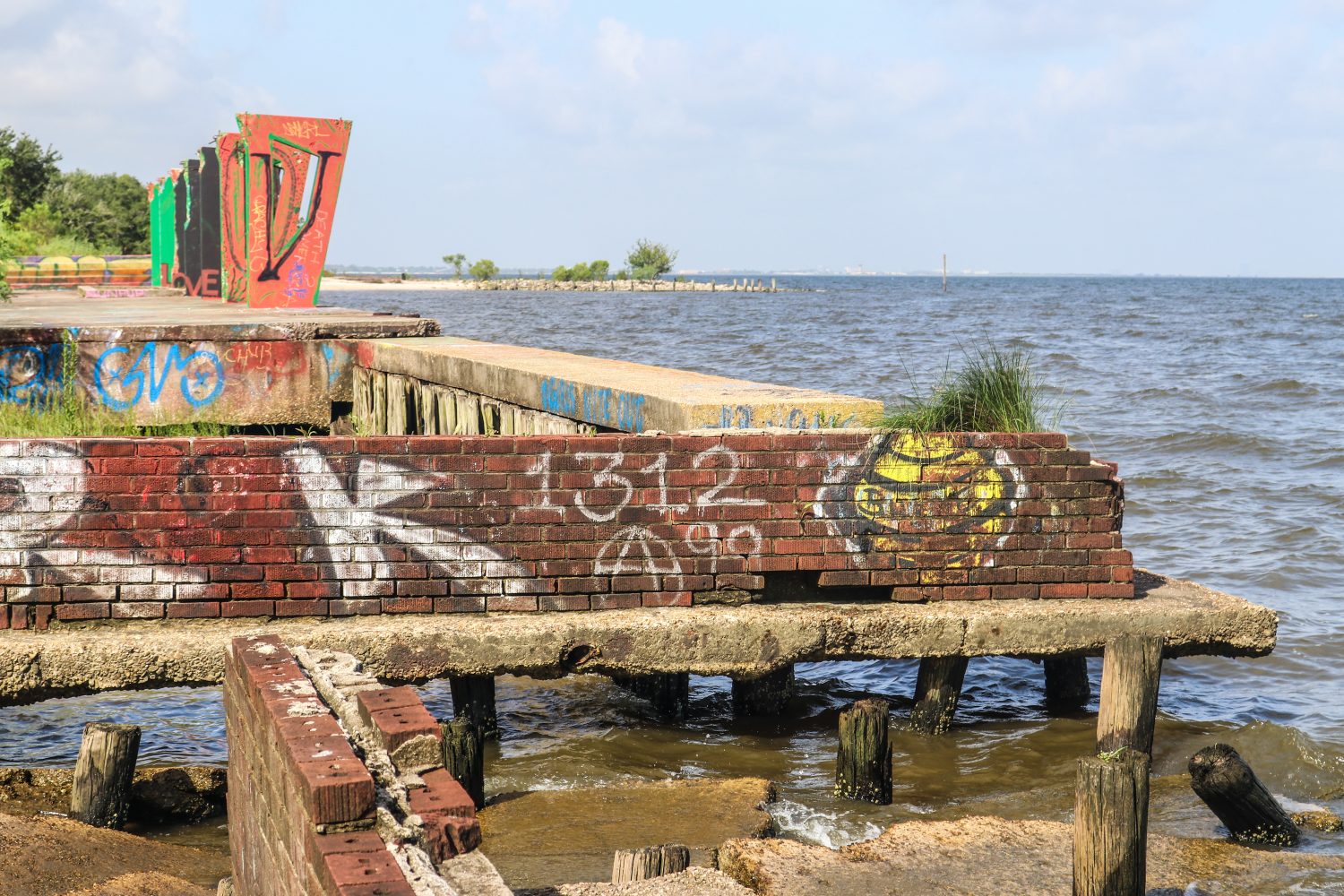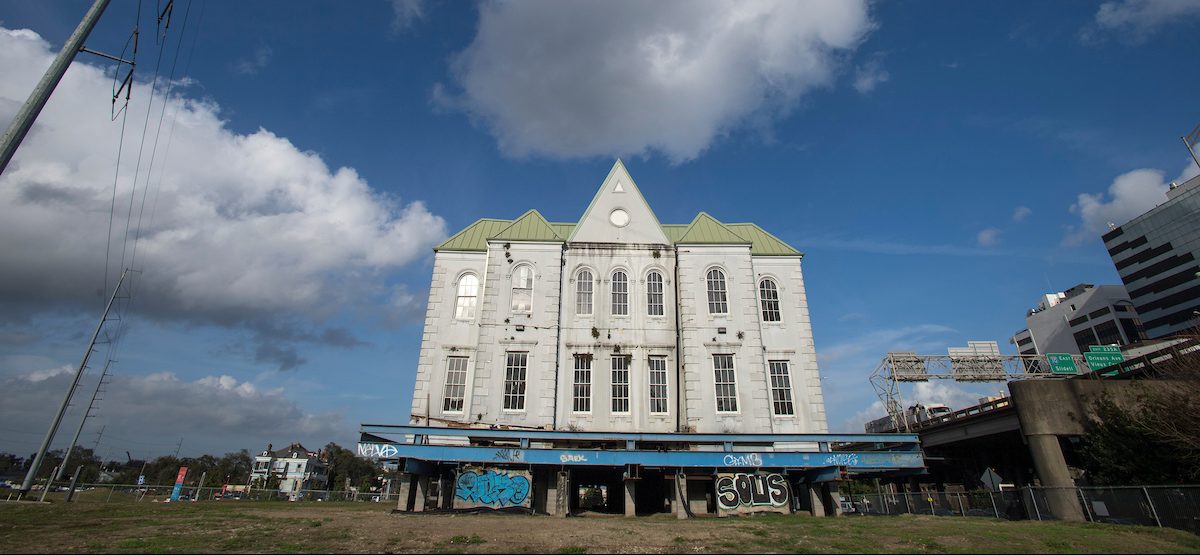This news brief appeared in the June issue of PRC’s Preservation in Print magazine. Interested in getting more preservation stories like this delivered to your door nine times a year? Become a member of the PRC for a subscription!
The New Orleans Department of Public Works has completed its study of Lincoln Beach, outlining the “mitigation activities that would be necessary to return it to public use.” Last year, Mayor LaToya Cantrell launched the assessment to determine the environmental, structural, topographic and bathymetric (underwater) conditions around Lincoln Beach, a public recreation area for African-American families that operated during the oppression of Jim Crow. The property has been closed since 1964, and has severely deteriorated over the decades.
The completed study, now available at nola.gov, examined the conditions of the parking structures, shelters, tunnels, swimming pool, concrete pads and other historic structures; the growth of “potentially poisonous flora, such as poisonous oak or ivy,” and invasive species; transit access possibilities and limitations; existing drainage, sewerage, potable water, gas and electrical systems; lake water depths and the location of underwater debris “that may present a challenge to converting the space to recreational use;” and conceptual level engineering evaluations “indicating potential areas of future development of the site.” The report was prepared by Digital Engineering & Imaging Inc.
“Access to the site is by way of a tunnel under the existing railroad, which is further restricted by a floodwall and the L-20 Floodgate of the Hurricane and Storm Damage Risk Reduction System,” the report says. “There are currently no utilities, such as water, sewer or power to the site, and many of its facilities are unsafe for use and not compliant with current safety and accessibility codes. As a result, all existing structures within the site pose a safety risk.
“The current challenge confronting the reopening of Lincoln Beach is constructing and maintaining safe, unhindered access across Hayne Boulevard, beyond the floodwall, and across the railroad tracks,” the report continues.
The assessment also acknowledges the importance of preserving the historic structures at the former beach and amusement park. “While safety improvements and accessibility are paramount, equally as important is the preservation of historic character and cultural significance within the existing site,” the report says. “Designing improvements with emphasis on this preservation will ensure Lincoln Beach is once again a source of pride within the community and a destination synonymous with other local and unique New Orleans attractions.”
The city has indicated that the reopening of Lincoln Beach, if feasible, could be a catalyst for larger investment in the New Orleans East lakefront. “Redevelopment of Lincoln Beach is more likely to be successful if it is developed in conjunction with other nearby businesses and developers,” the city’s website says. “Used as an anchor project, it may help re-develop the New Orleans East Lakefront similarly to how the Lafitte Greenway spurred economic development in Mid-City.”
Advertisement








